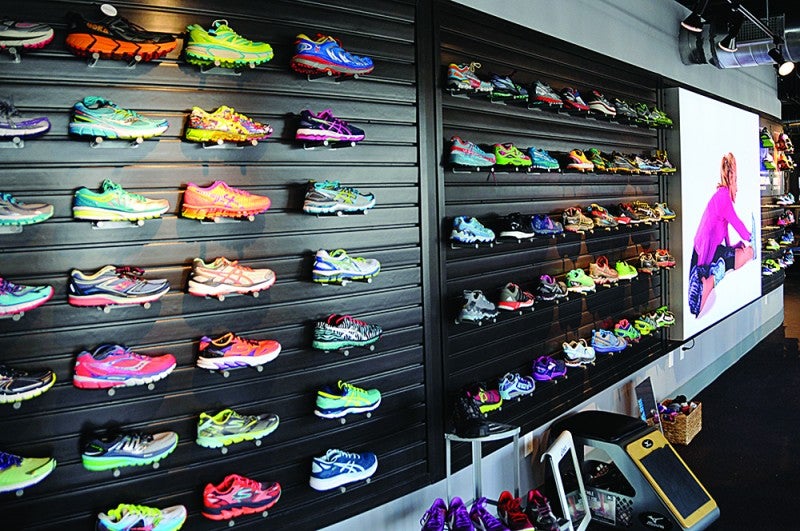How To Buy Your Next Pair Of Running Shoes

With so much techno-speak and marketing jargon about running shoes, it’s hard to know which ones are best for you. Here are four tips to help you find the right pair.
1. Shop smart
You can buy shoes at a lot of places, but most specialty running shops sell only running-related gear, apparel and accessories—unlike a sneaker shop at the mall or sporting goods store that sells gear for many other sports besides running. And the people who work there know and understand running—running shoes, running gait types, how to train and what accessories you need. They are experts at fitting shoes and understanding how different types of shoes can influence your form, improve the kind of running you’re doing or reduce the chance for overuse injuries. The bottom line? Running shops ooze inspiration.
RELATED: Two Ways To Prevent Running Injuries
2. Feel or float?
Shoes are generally categorized by how much cushioning and structure they have. Do you like to feel the ground or would you rather have more cushioning under your feet? Running in minimally designed shoes requires agility and exceptionally strong lower legs and feet. Running in maximally cushioned shoes requires good balance and an inherent sense of proprioception. As far as structure goes, most runners pronate (the process of the foot rolling inward from the ankle when it impacts the ground) to some degree, and that’s OK. Many runners can run in neutral shoes or light stability shoes, which have a little bit of structure to reduce overpronation.
However, severe overpronation can lead to a variety of common overuse injuries, and in that case, more supportive shoes (or corrective insoles) are often needed. But remember, doing regular speed and strength drills will help you strengthen your feet and balance your gait.
RELATED: Do You Need Insoles For Your Running Shoes?
3. Get a pair that fits
Your running shoes should fit snug, but not tight, in the heel and midfoot/arch area without pinching or feeling constrained when your foot flexes. The toe box shouldn’t be too tight either; it should have some extra wiggle room for your piggies to splay upon impact and push-off. (Some shoes have considerably more roomy toe boxes, especially shoes built for running rugged trails.) Your foot will also tell you if something about the shoe doesn’t feel right: Does it cramp your toes? Is there a seam that rubs awkwardly? Does it feel like it’s slipping off your heel on every stride? If the laces really need to be tightened down to get a comfortably secure fit, it’s probably not the best shoe for you.
RELATED: How To Find The Perfect Running Shoe
4. And finally …
Never shop for a shoe by its color or how it looks with jeans. The one that comes in your favorite color may not be the best for you. And when it comes to running shoes, you should only wear them for running. Having a quiver of shoes will allow you to rotate pairs during a week of training and help extend the life of your shoes. However, wearing your running shoes to do errands, mow the lawn or other everyday tasks will change the wear pattern of the outsoles and make them wear out sooner than they should. And that could lead to overuse injuries.